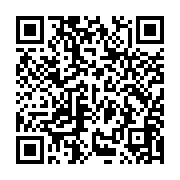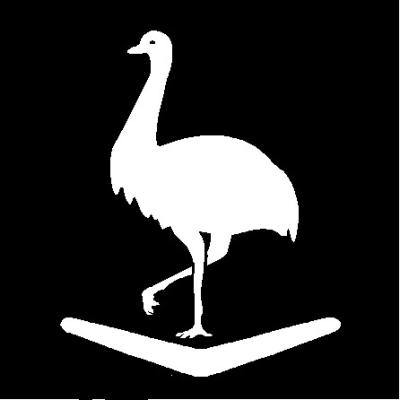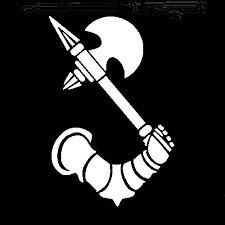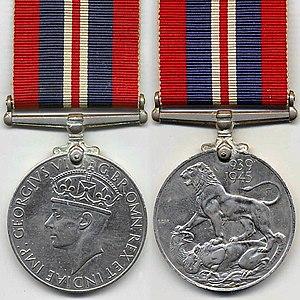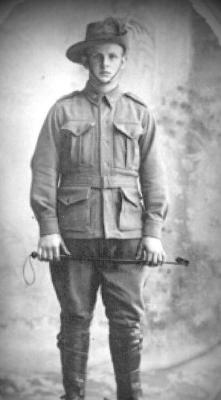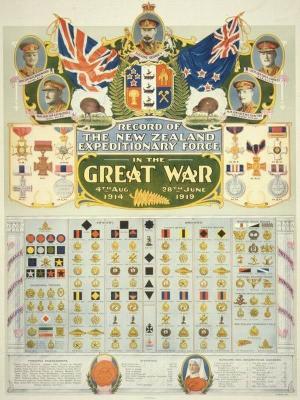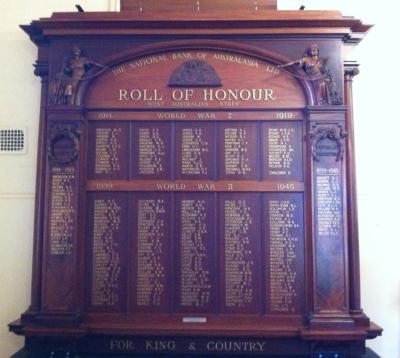Formation Sign - 6th Australian Division, World War 2
During World War 2, each Australian military vehicle normally carried a formation sign, usually of the Division to which they were permanently attached. The sign was affixed to the front nearside (left) bumper, or close to it, such as a forward facing wing, and in a prominent position at the rear, also on the nearside. It was 9 inches square normally a white stencil on a black background. The Divisional insignia of the 6th Australian Division was a kangaroo over a boomerang.
Throughout 1940–1941, 6 Division served in the North African Campaign, (Bardia and Cyrenaica) the Greek campaign, on Crete and in Syria, fighting again the Germans, Italians and Vichy French.
In 1942, the division left the Middle East and returned to Australia following Japan's entry into the war. Part of the division garrisoned Ceylon for a short period of time, before the division was committed to the New Guinea campaign.
In New Guinea, its component brigades had a major role in the successful counter-offensive along the Kokoda Track, at Buna–Gona and around Salamaua–Lae in 1942–1943.
Throughout late 1943–1944, the division was re-organised in Australia before being committed as a complete formation to one of the last Australian operations of the war around Aitape–Wewak in 1944–1945.
Details
Details
The standard reference is the 1997 monograph Formation signs and vehicle markings of the Australian Army 1903-1983 by Stephen Craig Taubert.
The marking of military equipment is not a new phenomena. A broad arrow, is a stylised representation of a metal arrowhead, comprising a tang and two barbs meeting at a point. It is a symbol used traditionally in heraldry, and later by the British government to mark government property.
The broad arrow was used in England from the early 14th century, and more widely from the 16th century, to mark objects purchased from the monarch's money, or to indicate government property. It became particularly associated with the Board of Ordnance, and later the War Department and the Ministry of Defence. It was exported to other parts of the British Empire, where it was used in similar official contexts.
The use of markings on Australian military vehicles expanded and became more sophisticated following the mass production and mechanization of armies. During World War 2, Australian military vehicles carried a wide variety of markings including the vehicle registration number, bridge classification, a Tactical (Tac) sign indicating the vehicles roll, a unit sign and a Division/Formation sign and many more.
Australian Army Museum of Western Australia
Australian Army Museum of Western Australia
Other items from Australian Army Museum of Western Australia
- Formation Sign - 7th Australian Division, World War 2
- Formation Sign - 8th Australian Division, World War 2
- Formation Sign - 9th Australian Division, World War 2
- Formation Sign - 1st Armoured Division, World War 2
- Formation Sign - 3 Australian Corps, World War 2
- Battlefield Grave Cross - Lieutenant Hugh Russel MC
- Medal - British War Medal 1939-45
- World War 1, Australia, Western Australia, FIRNS 10 Light Horse
- Medals - Combined Display of Australian Honours and Awards
- Poster - Australian Imperial Force Colour Patches
- Poster - New Zealand Expeditionary Force Badges and Colour Patches
- Honour Board- National Bank of Australasia (World War 1, World War 2)
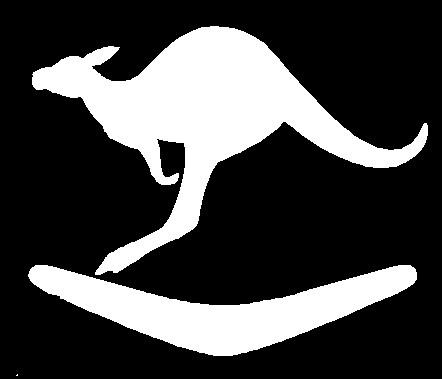
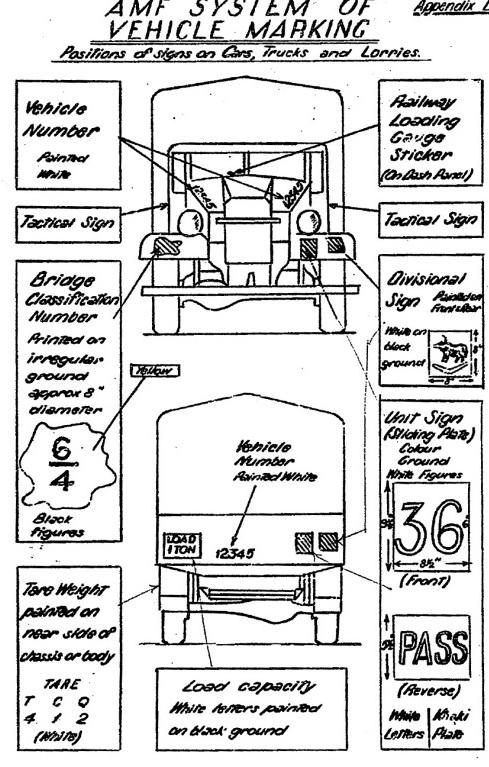
Scan this QR code to open this page on your phone ->
